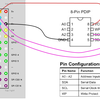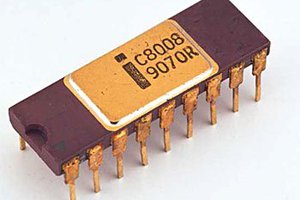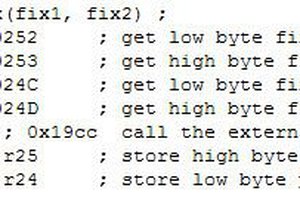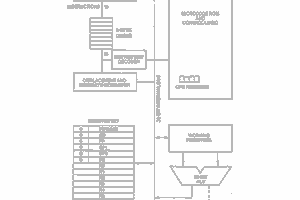This project is rather large and the work is not that linear. To make the logs readable I will from time to time rewrite them.
Project logs:
- Convert SC.PAS to SimpleC.c(done).
- Adjust the code for the CPU word width and memory model (done).
- Build tool train(done):
- Subleq code generator (using the Simple Compiler OpCodes as input),
- Subleq Assembler, and
- Subleq Interpreter.
- Modify the Simple Compiler to export OpCodes to suit OpCode2Subleq.
- Link up and debug the tool chain (done):
- SimpleC -> OpCode2Subleq -> Subleq_Asm -> Subleq_Int
Mission Completed
I now have a working Subleq Compiler. Yes it is very primitive and very very slow but that can be made better.
Here is the test code ("1.SC"):
begin
A=4
B=1
if A<B then
write A*10<b
else begin
write 1<B*10
write B*10, (a+b)*(-5)
end
C=-1
write C
endHere is the tool chain in action:C:\AlanX\SimpleC\OpCode2Subleq>SimpleC -o 1.opc 0<1.sc Tokenised Code: Line 1: BEGIN Line 2: A = 4 Line 3: B = 1 Line 4: IF A < B THEN Line 5: WRITE A * 10 < B Line 6: ELSE BEGIN Line 7: WRITE 1 < B * 10 Line 8: WRITE B * 10 , ( A + B ) * ( - 5 ) Line 9: END Line 10: C = - 1 Line 11: WRITE C Line 12: END Done. C:\AlanX\SimpleC\OpCode2Subleq>OpCode2Subleq -i 1.opc -o 1.sasm C:\AlanX\SimpleC\OpCode2Subleq>Subleq_Asm -i 1.sasm -o 1.code -l 1.list C:\AlanX\SimpleC\OpCode2Subleq>Subleq_Int -i 1.code -l 1.list -t 1.trace SUBLEQ Interpreter 1 10 -25 -1 Interpreter finished C:\AlanX\SimpleC\OpCode2Subleq>pause Press any key to continue . . .
Speed
The interpreter takes a full 4 seconds to execute! Hard to believe anything could be this slow.
Code Size
- 1.sc - 12 lines
- 1.opc - 74 lines including the header (95 words)
- 1.sasm - 3126 lines including comments (5530 words)
Improvements
Rather than fix/improve Simple Compiler it may be better to port a more complete compiler to work with OpCode2Subleq.
The tool train would suit a Transport Triggered Architecture (TTA) like my "Weird CPU" if the word size is increased from 8 bits to 12 bits or 16 bits.
Conclusion
Subleq is horribly inefficient.
PL/0
It is pretty clear that the root source of most of these simple compilers is Wirth's PL/0 as the language syntax (i.e. the expression part) is identical with the same names, omissions and unary minus fault. Unfortunately they did not carry through the rest of PL/0.
I have sourced Wirth's original PLZero Pascal source code which I will follow for upgrades to Simple Compiler.
Tokeniser
I have split the tokeniser out of Simple Compiler as it can be done and it reduces the code size of Simple Compiler.
String Tokens
I prefer working with string tokens (e.g. "IF" than working with integer tokens (e.g. _if) as I don't need a list of token definitions. So I will rework the code to suit.
PL/0 in C
Ported Wirth's PL/0 Pascal source code into C. Now I am a native Pascal programmer and Wirth was the Inventor of Pascal. So it is a bit sad that I ported his code to C.
PL/0 Extensions
The basic PL/0 is a bit primitive (no strings!). So I have added arrays and (Pascal) strings. It also recognise the majority of dialects I have seen. But no built in functions, or user functions or procedure parameter lists. I am not trying to clone a full version of Pascal, just a very basic compiler for home brew CPUs.
The compiler syntax error reporting needs a bit of work to be more helpful, and finally there are no run-time checks!
But overall I am very happy with this little compiler.
P-Code to Subleq
The PL/0 compiler exports "P-Code". This needs to be translated into Subleq. There are 26 Instructions to recognise. Few of the instructions are simple.
AlanX
 agp.cooper
agp.cooper






 Paul Robson
Paul Robson
 Bruce Land
Bruce Land
 aaron
aaron
 Keith
Keith
add llvm r code generate